-
 bitcoin
bitcoin $107208.295278 USD
-1.54% -
 ethereum
ethereum $3874.629914 USD
-1.38% -
 tether
tether $1.000440 USD
0.03% -
 bnb
bnb $1089.465513 USD
-5.53% -
 xrp
xrp $2.327672 USD
-1.65% -
 solana
solana $184.766505 USD
-0.73% -
 usd-coin
usd-coin $1.000076 USD
0.02% -
 tron
tron $0.310632 USD
-1.99% -
 dogecoin
dogecoin $0.187615 USD
-1.60% -
 cardano
cardano $0.633389 USD
-2.75% -
 ethena-usde
ethena-usde $0.999553 USD
0.03% -
 hyperliquid
hyperliquid $35.608231 USD
-4.13% -
 chainlink
chainlink $16.876114 USD
-3.98% -
 stellar
stellar $0.312239 USD
-0.91% -
 bitcoin-cash
bitcoin-cash $473.262969 USD
-7.09%
Is it safe to give websites my MetaMask address?
Sharing your MetaMask address is generally safe, but it exposes your transaction history and can lead to privacy risks if linked to your identity or used on untrusted sites.
Oct 16, 2025 at 11:36 am

Understanding the Risks of Sharing Your MetaMask Address
1. Sharing your MetaMask address with websites is generally considered safe because it is designed to be a public identifier. This address functions similarly to a bank account number in traditional finance—it allows others to send cryptocurrency to your wallet but does not grant access to your funds or private keys.
2. However, once you expose your address, every transaction linked to it becomes visible on the blockchain. Public block explorers enable anyone to view your transaction history, balance changes, and interactions with decentralized applications (dApps). This level of transparency can lead to privacy concerns, especially if your identity becomes associated with the wallet.
3. Some malicious actors use aggregated data from known addresses to conduct targeted phishing attacks. If a website collects your address and combines it with other personal information, it could increase your exposure to social engineering attempts aimed at tricking you into revealing sensitive details.
4. Certain advanced tracking techniques employed by analytics platforms can link multiple wallets together based on interaction patterns. Even though your identity may not be directly exposed, behavioral profiling can still compromise financial privacy over time.
When It’s Safe—and When It Isn’t
1. Legitimate decentralized finance (DeFi) platforms, NFT marketplaces, and blockchain games require your wallet address to facilitate transactions and verify ownership. Connecting your MetaMask to such platforms through approved connection methods like WalletConnect or direct browser extension integration is standard practice.
2. Never enter your private key or seed phrase on any website, regardless of how trustworthy it appears. Scammers often create fake versions of popular dApps that mimic real interfaces solely to steal credentials. Always double-check URLs and ensure you are interacting with verified domains.
3. Be cautious when granting permission for smart contracts to interact with your wallet. Some sites request approval for token spending limits far exceeding what's necessary. Regularly review and revoke unnecessary allowances using tools like Revoke.cash to minimize risk.
4. Avoid entering your wallet address on obscure forums, giveaways, or unsolicited airdrop claim pages. These are common vectors for scams where attackers collect addresses to later exploit through impersonation or malware distribution.
Potential Consequences of Overexposure
1. Persistent tracking across multiple platforms can erode financial anonymity. Advertisers and data aggregators analyze wallet activity to build user profiles, which might influence the types of offers or promotions you receive—some of which could be deceptive.
2. High-value wallets often attract unwanted attention. If your balance is publicly visible and substantial, you may become a target for sophisticated attacks, including SIM swapping or blackmail attempts based on transaction patterns.
3. Linking your real-world identity to your wallet increases vulnerability. Posting your address alongside your name on social media or public registries makes it easier for bad actors to correlate off-chain and on-chain data, potentially leading to doxxing or reputational harm.
4. Reusing the same wallet address across different services amplifies exposure. Consider using separate wallets for distinct purposes—such as one for trading, another for NFTs, and a cold storage option for long-term holdings—to compartmentalize risk.
Best Practices for Protecting Your Digital Identity
1. Use burner wallets for experimental dApps or unfamiliar platforms. These temporary wallets hold minimal funds and help isolate potential breaches without endangering your primary assets.
2. Enable privacy features offered by certain blockchains or layer-2 solutions. Networks like Polygon or Arbitrum provide varying degrees of obfuscation, reducing the clarity of transaction trails compared to fully transparent chains like Ethereum.
3. Regularly audit connected apps and permissions within your MetaMask settings. Disconnect integrations from services you no longer use to reduce attack surface and prevent dormant contracts from being exploited.
4. Stay informed about emerging threats in the crypto space. Cybersecurity trends evolve rapidly, and awareness of current scam tactics—such as fake token approvals or domain spoofing—can prevent costly mistakes.
Frequently Asked Questions
Can someone steal my crypto just by knowing my MetaMask address?No. A MetaMask address alone cannot be used to withdraw funds or initiate transactions. Access requires either the private key or seed phrase, which should never be shared under any circumstances.
Is it risky to participate in airdrops that ask for my wallet address?It depends on the source. Official airdrops from reputable projects are generally safe, but many fraudulent campaigns collect addresses to spam users or distribute malicious tokens. Verify the legitimacy of the project before participating.
Can I change my MetaMask address if I think it’s compromised?Yes. You can create a new wallet within MetaMask or generate an entirely new account. Transfer your assets securely after ensuring the new address is correct, then discontinue use of the old one.
Do scammers ever clone legitimate websites to capture wallet info?Absolutely. Fake versions of popular DeFi platforms and NFT marketplaces are common. Always check the URL carefully, look for HTTPS, and avoid clicking links from untrusted sources like emails or social media messages.
Disclaimer:info@kdj.com
The information provided is not trading advice. kdj.com does not assume any responsibility for any investments made based on the information provided in this article. Cryptocurrencies are highly volatile and it is highly recommended that you invest with caution after thorough research!
If you believe that the content used on this website infringes your copyright, please contact us immediately (info@kdj.com) and we will delete it promptly.
- Jupiter Exchange's Ultra V3: A New Era for Solana Trading
- 2025-10-18 16:25:12
- Investors, Centralization Risks, and Top Coins: Navigating the Crypto Landscape
- 2025-10-18 16:45:16
- Uniswap, Solana, and Liquidity: Bridging the DeFi Divide
- 2025-10-18 16:45:16
- Bitcoin Price Target: Analysts Eye $125K Amidst Market Jitters
- 2025-10-18 16:50:13
- Solana, ADA, SUI: Navigating the Altcoin Landscape in a Shifting Market
- 2025-10-18 16:50:13
- DOGE Price Recovery: Is a Major Rally on the Horizon?
- 2025-10-18 16:55:12
Related knowledge
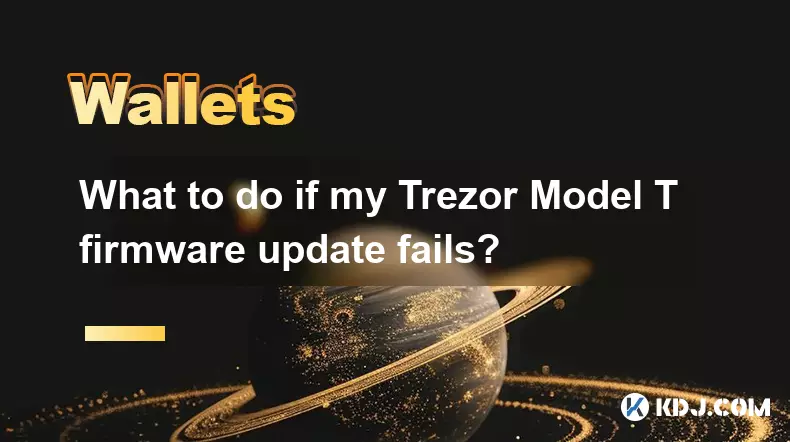
What to do if my Trezor Model T firmware update fails?
Oct 18,2025 at 12:54pm
Understanding Firmware Update Failures on Trezor Model T1. Firmware updates on the Trezor Model T are essential for maintaining security, accessing ne...
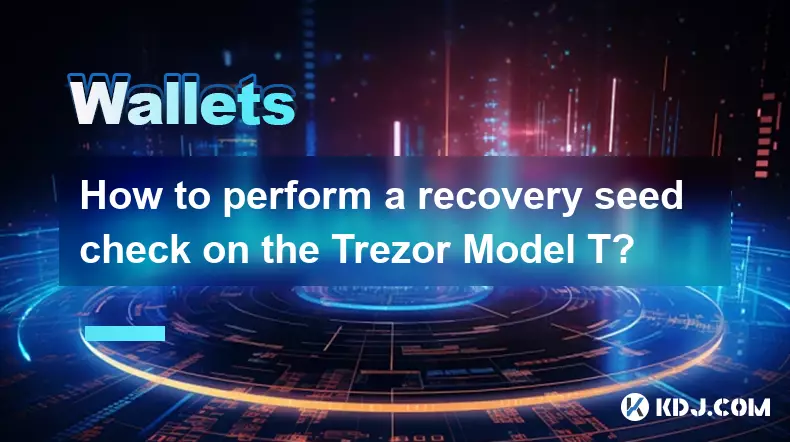
How to perform a recovery seed check on the Trezor Model T?
Oct 18,2025 at 06:18pm
Understanding the Importance of a Recovery Seed Check1. A recovery seed is a critical backup mechanism for cryptocurrency wallets like the Trezor Mode...
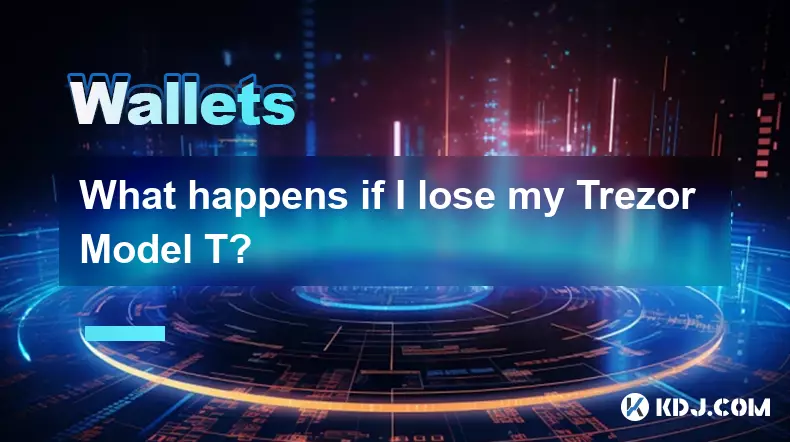
What happens if I lose my Trezor Model T?
Oct 18,2025 at 03:00am
Recovering Access to Your Cryptocurrency After Losing a Trezor Model T1. The Trezor Model T is a hardware wallet designed to securely store private ke...
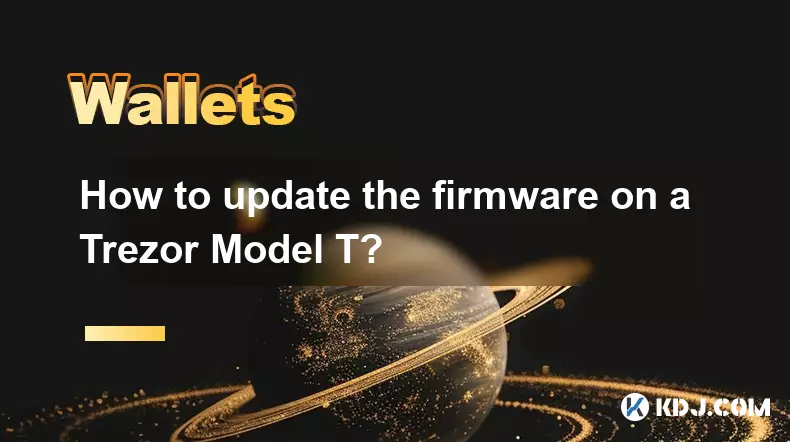
How to update the firmware on a Trezor Model T?
Oct 18,2025 at 12:36pm
Firmware Update Preparation for Trezor Model T1. Ensure your Trezor Model T is fully charged before beginning the update process. A low battery could ...
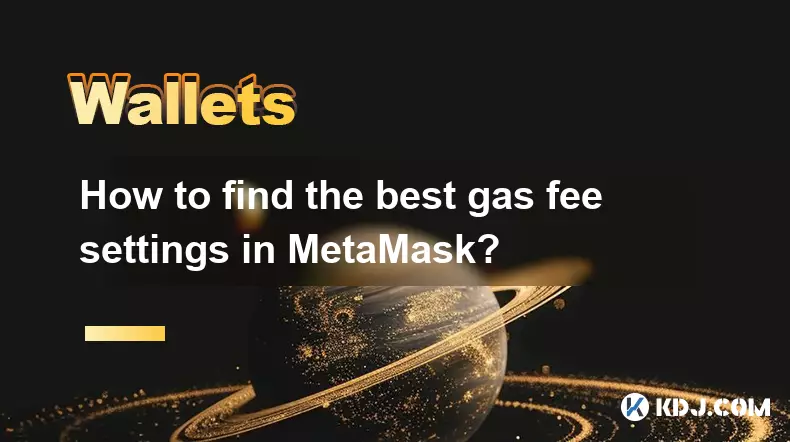
How to find the best gas fee settings in MetaMask?
Oct 17,2025 at 05:54pm
Understanding Gas Fees in MetaMask1. Gas fees are payments made by users to cover the computational energy required to process and validate transactio...

How to install MetaMask on Firefox?
Oct 18,2025 at 05:54pm
Installing MetaMask on Firefox1. Open the Firefox browser and navigate to the official Mozilla Add-ons website by typing addons.mozilla.org into the a...

What to do if my Trezor Model T firmware update fails?
Oct 18,2025 at 12:54pm
Understanding Firmware Update Failures on Trezor Model T1. Firmware updates on the Trezor Model T are essential for maintaining security, accessing ne...

How to perform a recovery seed check on the Trezor Model T?
Oct 18,2025 at 06:18pm
Understanding the Importance of a Recovery Seed Check1. A recovery seed is a critical backup mechanism for cryptocurrency wallets like the Trezor Mode...

What happens if I lose my Trezor Model T?
Oct 18,2025 at 03:00am
Recovering Access to Your Cryptocurrency After Losing a Trezor Model T1. The Trezor Model T is a hardware wallet designed to securely store private ke...

How to update the firmware on a Trezor Model T?
Oct 18,2025 at 12:36pm
Firmware Update Preparation for Trezor Model T1. Ensure your Trezor Model T is fully charged before beginning the update process. A low battery could ...

How to find the best gas fee settings in MetaMask?
Oct 17,2025 at 05:54pm
Understanding Gas Fees in MetaMask1. Gas fees are payments made by users to cover the computational energy required to process and validate transactio...

How to install MetaMask on Firefox?
Oct 18,2025 at 05:54pm
Installing MetaMask on Firefox1. Open the Firefox browser and navigate to the official Mozilla Add-ons website by typing addons.mozilla.org into the a...
See all articles
















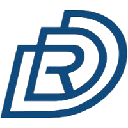






![[4K 60fps] 5upreme by RoyalP (1 coin) [4K 60fps] 5upreme by RoyalP (1 coin)](/uploads/2025/10/18/cryptocurrencies-news/videos/k-fps-upreme-royalp-coin/68f2e6c9ef491_image_500_375.webp)


















































